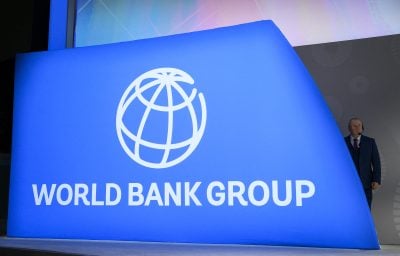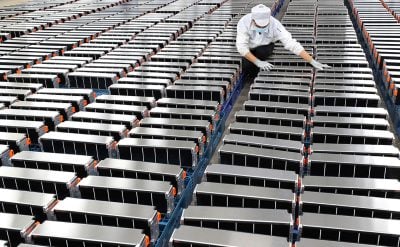Hectic trading action on the Ethiopian Commodity Exchange (ECX) hints at the dynamism and potential of the economy. On the exchange floor, buyers in khaki coats and sellers in green coats strike bargains on over 500,000 tonnes a year of coffee, maize, sesame and white pea beans in a bustle of activity. The ECX recently boasted a billion dollars in trading and no failed trades.
The IMF has forecast that growth in Ethiopia’s economy over 2011-2105 will average 8.1% a year, the third highest rate in the world after China and India. GDP is set to grow to Birr 919bn ($45.8bn) by 2015. Although income (GDP) per capita at current prices was only $342 in 2011 (down from $350 in 2010 and $389 in 2009 due to population growth), it is forecast to grow swiftly, to $480 by 2015.
Ethiopia recently became Africa’s fourth biggest economy and has achieved annual economic growth of 8.4% after inflation over the period 2001-2010, the fifth fastest rate among the world’s major economies. It also has Africa’s second biggest population (figures vary between 85m and 91m), which is growing fast and promises a boom in the productive labour force in coming years.
Rising income levels from a low base, combined with a large, growing population could lead to exponential growth in the consumption of consumer goods and investors are lining up.
Estimates about the potential growth of the economy are being revised upwards, as can be seen by the high valuations that international companies have been willing to bid for a chance to compete in local consumer markets. On 1 September the Privatisation and Public Enterprises Supervisory Agency opened bids for the 100% privatisation of Meta Abo Brewery, in a prime location only 20km from Addis Ababa, with a floor price of Birr 1.4bn. Global drinks giant Diageo bid Birr 3.8bn ($225m), followed by SAB Miller at $190m and Heineken at $188m. SAB already has a mineral water joint venture with the government and Heineken previously bought two other breweries for a total of $163m.
The potential for a wide range of business is growing fast with the size of the economy and because of structural transformation. Imports of goods were forecast to be $13.8bn by 2014/15 (the Ethiopian fiscal year ends in early July) and exports to grow from $1.4bn in 2008/09 to $4.4bn in 2014/5. Gross domestic product (GDP) at current prices is estimated at Birr 470bn ($29.7bn) for 2011, up 23% from Birr 383bn.
Subsistence agriculture, which provided a basic livelihood for up to 85% of the population in years and regions where rains were specific, is finally moving aside from its dominance in the economy.
The contribution of services, including real estate, hotels, transportation, communications, banking, health and education, to GDP (45%) passed that of farming (43%) in 2008/9, and in the following year, 2009/10, services contributed 46% and agriculture 41%.
Operating revenue for Ethiopian airlines was $1.26bn in the year to June 2010, compared to the main export crop, coffee, which grew strongly to earn $842m in the year to July 2011.
Economist Helaway Tadesse, Senior Vice President of Zemen Bank, said that services had been a major contributor to growth in the past seven years and “can continue to grow strongly for many years as the basic elements of a modern economy are rolled out on a nationwide scale, including the broadening of health and education services (both in the public and private domains), retail and wholesale trade, real estate, banking, and tourism.”
Mining is also on the increase in another sign of diversification. Gold is top of the list but a wide range of exploration is under way. Gold overtook oil seeds as the second-biggest export earner in the first half of the year to July 2011.
A plan for growth and transformation
The government sets the agenda for fast and focused structural transformation in ambitious five-year plans, including the latest Growth and Transformation Plan (GTP) to 2014/15. Projected growth rates for agriculture and services are 8% and 10.5% a year, similar to the trend in previous years. Although the weather in Ethiopia can be fickle, growth will come from placing more emphasis on commercial farming, which is more productive, and from bringing underutilised arable land into production. Giant farms of 10,000-100,000 ha are being allocated at low rates to a wide range of foreign investors including Indians, Saudi Arabians, Chinese, British, Turks and others, while smaller farmers are to be supported through increases in agricultural extension services.
Industry is seen as increasingly important. The GTP forecasts 22% growth a year, driven partly through incentives for import-substituting industries and encouraging foreign investors in these sectors, after some years of backing export growth. The result is large industrial plans and the GTP suggests that textile exports could pass $1bn by the end of the plan period, cement output will grow ten times and it foresees big growth in sugar, leather products, steel/metals and mining. There are plans for large industrial parks including Indian and Turkish plans and the Chinese are making progress already on a $5bn Chinese park at Dukem – and a wide range of industries. A key target is to create sustainable jobs rather than just focusing on GDP. Huge amounts of road, railways, ports, power and telecommunications lines and other infrastructure must be financed and built and then generate revenues to pay for maintenance. The funds poured into building and development should not overheat the economy. Growth carries the promise of transforming living standards and Ethiopia has also prioritised the Millennium Development Goals (MDGs). The GTP clearly has in its grasp halving poverty, 100% primary school coverage, and 100% universal health coverage, backed by quality private sector institutions.
Want to continue reading? Subscribe today.
You've read all your free articles for this month! Subscribe now to enjoy full access to our content.
Digital Monthly
£8.00 / month
Receive full unlimited access to our articles, opinions, podcasts and more.
Digital Yearly
£70.00 / year
Our best value offer - save £26 and gain access to all of our digital content for an entire year!
 Sign in with Google
Sign in with Google 


